Mark Bibby Jackson goes on two walks in the Peak District to discover two excellent hotels and a country house impressive enough to inspire one of our finest writers.
I have this thing about Highland cows. There are a couple of them in a field close to where we live, so most days I pop there to say ‘hi’ to them, although they have yet to return the greeting. So, as we check in at the Peak Edge Hotel I am delighted to see a painting of a Highland cow behind reception. Even better I discover a small herd of the cattle live in the field at the back of the hotel. After checking in, I walk down to greet them and receive my customary lack of response.
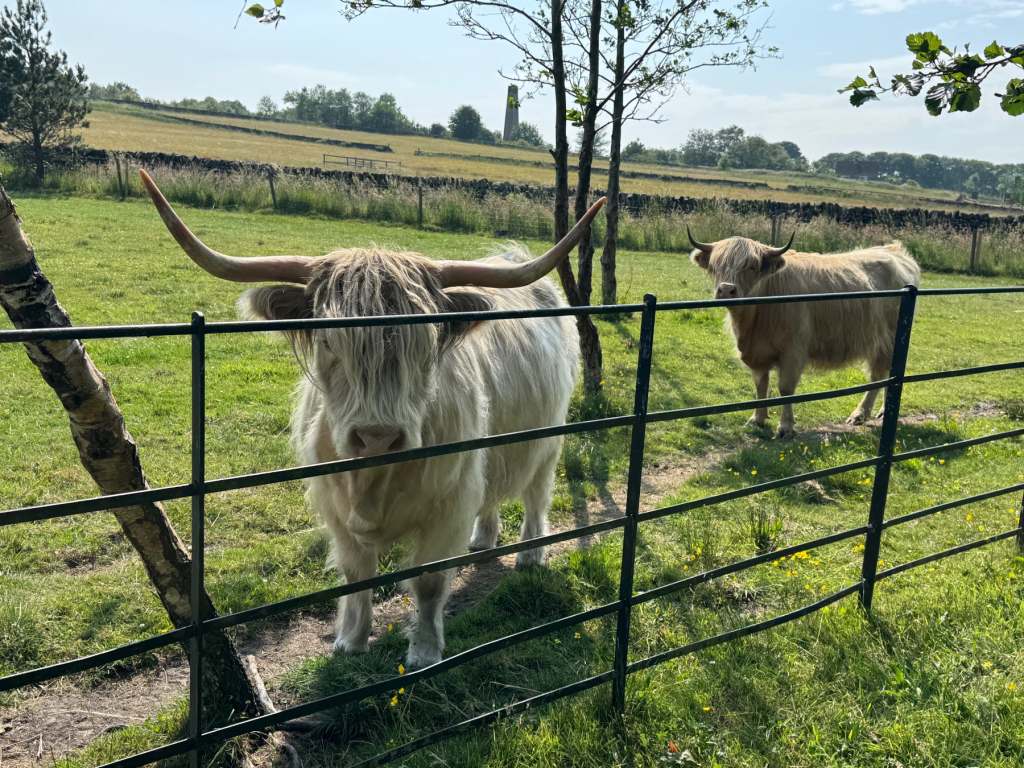
Peak Edge Hotel
Cattle apart, the friendliness of the staff at the Peak Edge Hotel is outstanding. Amy on reception offered to help me with our bags from the car – and it being a hot day – for once I accepted. Then, after receiving my bovine brush-off, the service at the hotel’s Red Lion Restaurant went beyond the call.
My companion had a starter portion of scallops, which were cooked to perfection while I opted for a smoked salmon sandwich, made with the freshest focaccia. Attentive yet non-intrusive, the service was right on point.
First Peak District Walk
The main purpose for my trip was to take in some of the great walks in the Peak district.
Peak Edge Hotel has three recommended walks you can take from the hotel, but I discovered by combining two of them you can create a fourth one.
Initially I set off along Darley Road for Stone Edge Chimney. This is allegedly the oldest industrial chimney in Britain, built around 1770, and situated a few hundred metres from the hotel. The path loops around a couple of ponds, with beautiful lotuses, before doubling back to the main road.
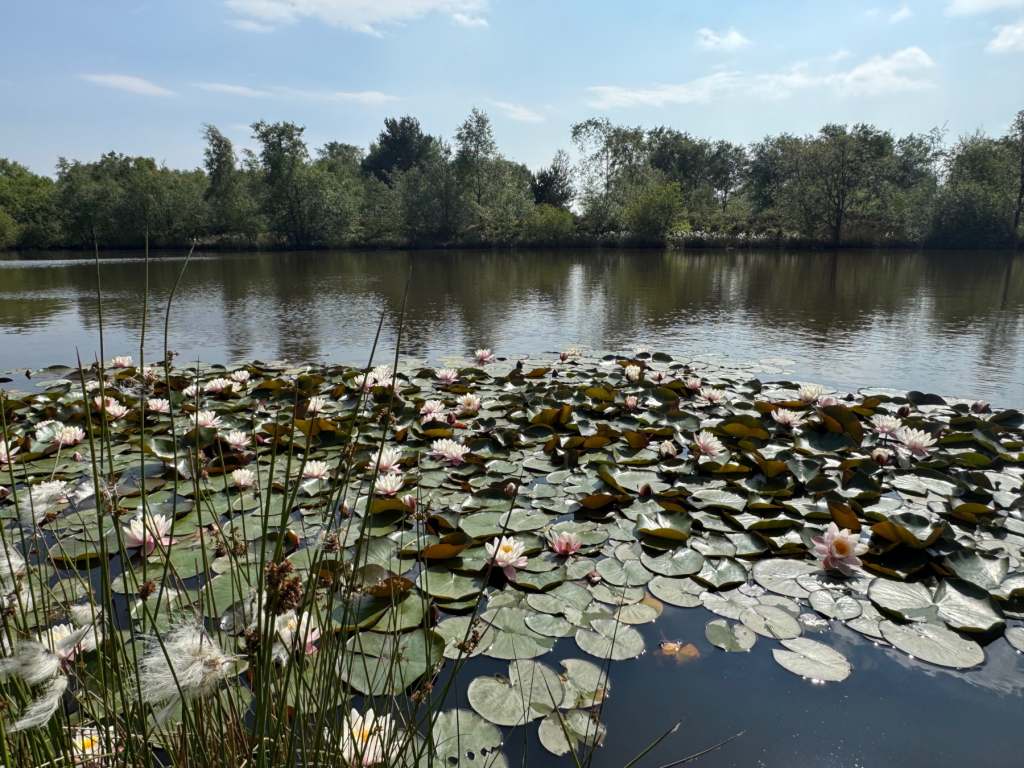
Instead of returning to the hotel I crossed the road and headed along a lane towards Stanedge Golf Course. The views to the left were particularly striking. I passed by the side of one of the fairways before a stile led over the stone wall into Stone Edge Woods, from where I doubled back to the hotel to conclude my most pleasant walk.
Dining at the Red Lion Restaurant
I returned to my room to prepare for dinner and have the most relaxing bath.
The room was well equipped with a Nespresso machine and a small desk, which I neglected as I was in need of some rest after a traumatic personal few weeks. It also afforded more views of the adjoining field and the highland cattle which will be my abiding memory of Peak Edge Hotel.
The communal spaces have a simple yet elegant design. I liked the old furniture, the barometers and the mirrors, as well naturally of the cow portrait above reception.
Due to the glorious weather, we never used the interior spaces but they looked most snug. In the winter the snow here can be heavy and staff say sometimes they have to stay the night. I was once stranded for a few days in Easter Island – getting stranded here for a night or two might run it a close second.
We dined on the terrace taking an excellent old fashioned as an aperitif. I ordered octopus for a starter and halibut for main. This is probably my favourite combination, and the kitchen staff matched their service colleagues in level of performance. My companion was so impressed with the scallops that she ordered them for her starter before having lamb as a main.
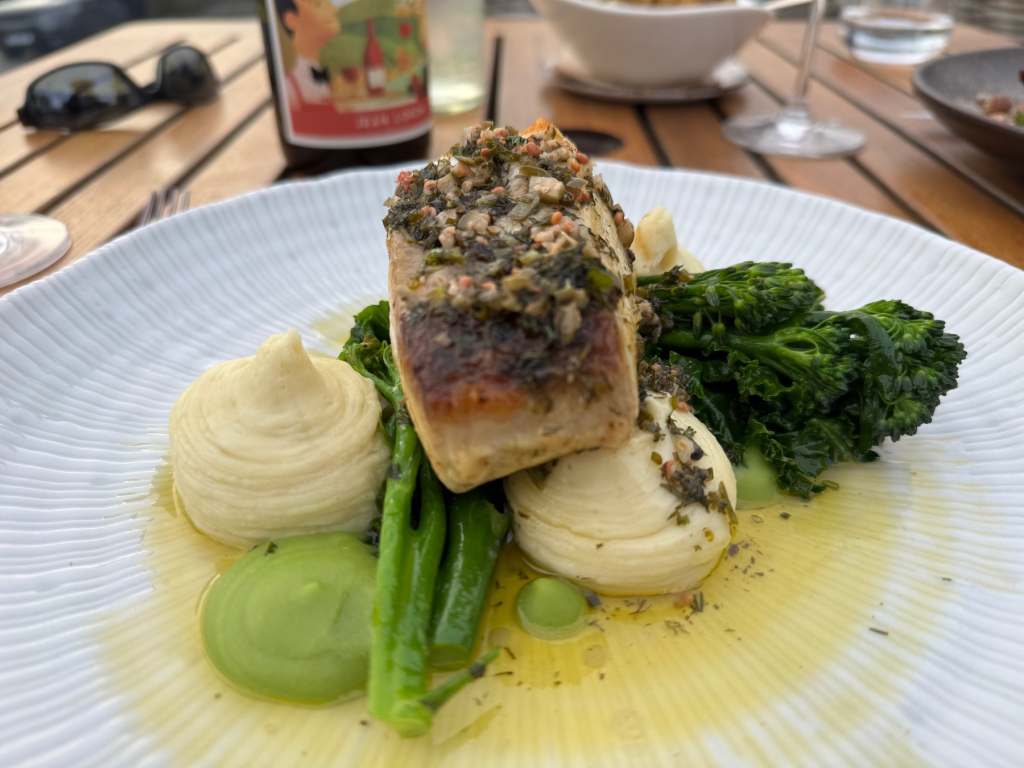
Wherever possible the food is locally sourced from the hotel’s own Walton Lodge Farm situated a mile away. Honey is harvested form their hives, fresh fruit form their gardens.
However, the highlight of the meal was sitting outside on the terrace looking at birds flying past with the hills in the background.
We were informed by the excellent and attentive staff how the sunset here is amazing. I can imagine it, but by the time it arrived on this late June evening we had retired inside for dessert – an excellent chocolate fondant.
Breakfast matched dinner. Although I was too late for the last kipper – apparently there was a rush that morning –, my eggs royal was cooked to perfection, and the full English satisfied my companion’s never-satisfied appetite.
Losehill Lodge
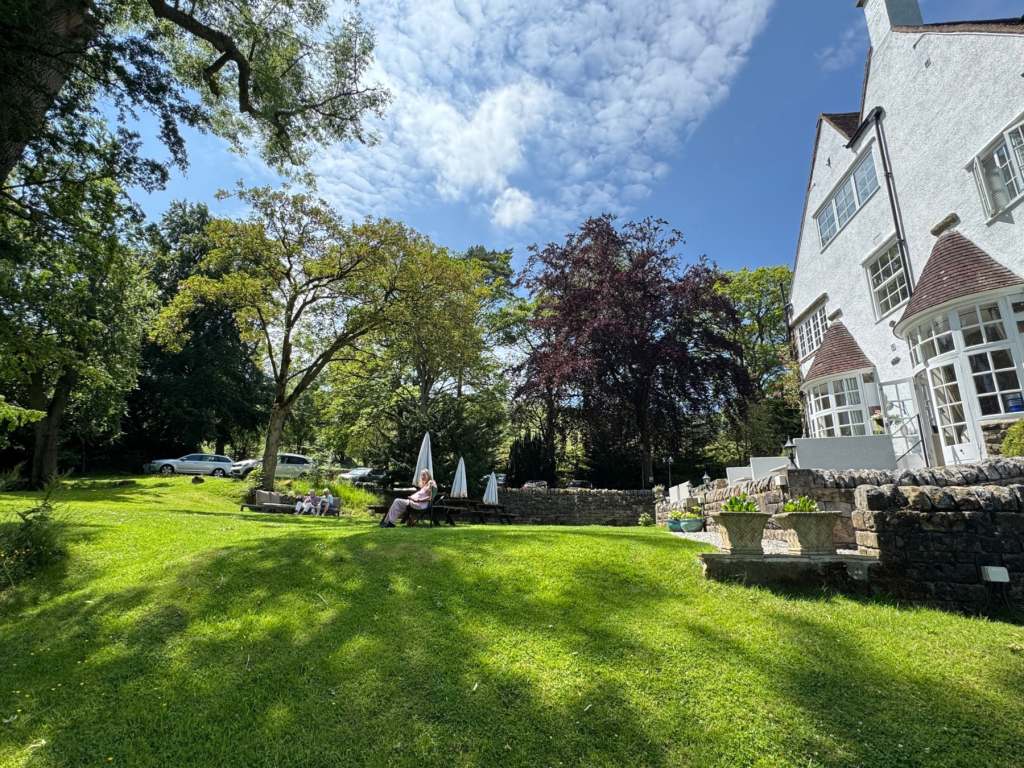
I was sad to leave but fortunately I was not to depart the Peak District. A short drive took us to Losehill House Hotel & Spa, across some of the most glorious countryside as well as the market town of Bakewell, from where the tarts originate. My companion had one the previous evening.
Losehill lies in the shadow of the hill of the same name. Looking out of the window of my beautiful room I could see across to Win Hill. Sheep munched away in the field at the bottom of our garden. This is your picture of the English countryside beautifully maintained, but with just a hint of wildness about it. You could imagine people getting lost here on a cold winter’s night. Fortunately, for me, the weather was perfect as I was about to climb Lose Hill itself.
The hotel also has a small spa with a hot tub, heated pool and sauna. In preparation for my climb, I took a couple dips in the pool and soaked my bones in the hot tub.
Second Peak District Walk
Lose Hill is some 476 metres high. From the hotel you just follow the road downhill for a hundred metres or so before taking a sharp turn at the fork and follow the clearly marked signs to Lose Hill. It really is impossible to get lost.
It’s a steep climb up Lose Hill regardless of what they tell you at reception, but the view at the top across Hope Valley is spectacular. The climb took me around an hour and I am not the fittest, so prepare for some stops to take in the views and enjoy the scenery.
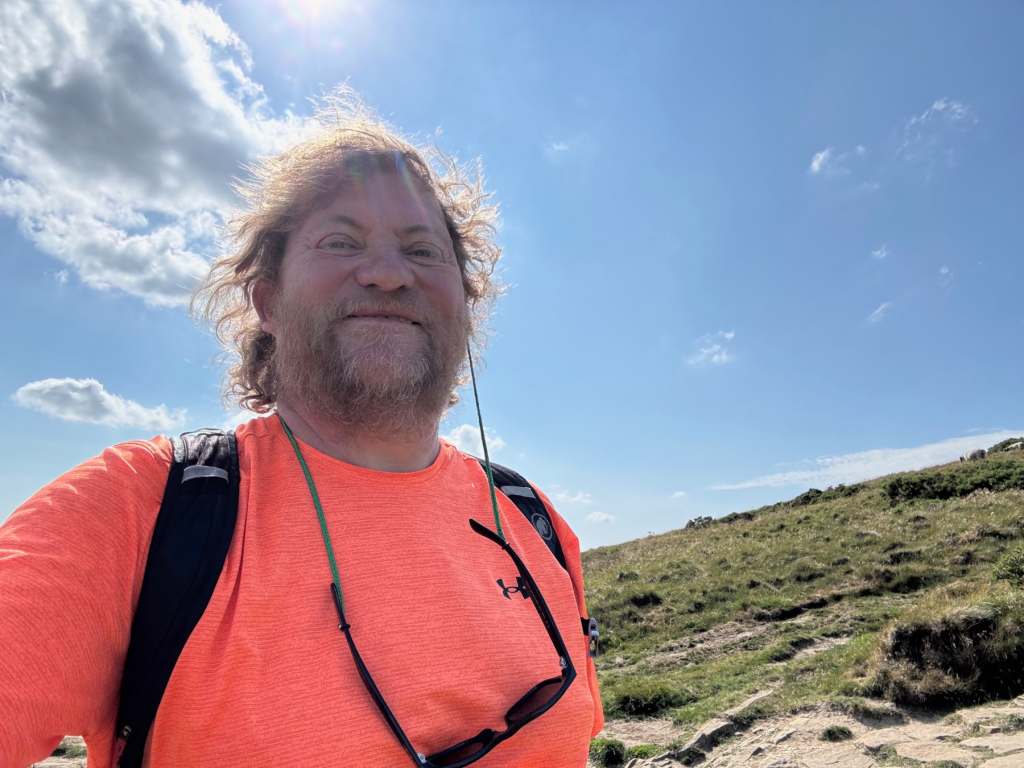
You can continue the walk along the trail towards Mam Tor which is slightly higher than Lose Hill. It is part of the Great Ridge which you can clearly trace from the summit, and one of the 95 Peak District Ethels, named after Ethel Haythornthwaite, an environmental campaigner who in 1924, founded a group that would become the Friends of the Peak District (FoPD), to protect the countryside of the Peak District. On this pristine day they seemed to have done a fine job.
Dining at Grafene Restaurant, Losehill House
After a much needed second hot tub, I joined my companion for a drink before dinner. During our stay an international cybersecurity company whose owner came from Sheffield was holding a team building exercise. We chatted with one of them, who came from Arizona. She was amazed by the devastating beauty of the Peak District.
The following day she was to spend in Sheffield which must have seemed another world to her despite its proximity. Sitting in the hotel’s ample grounds watching the sheep strut their stuff, it was hard to disagree with her assessment. It was truly amazing.
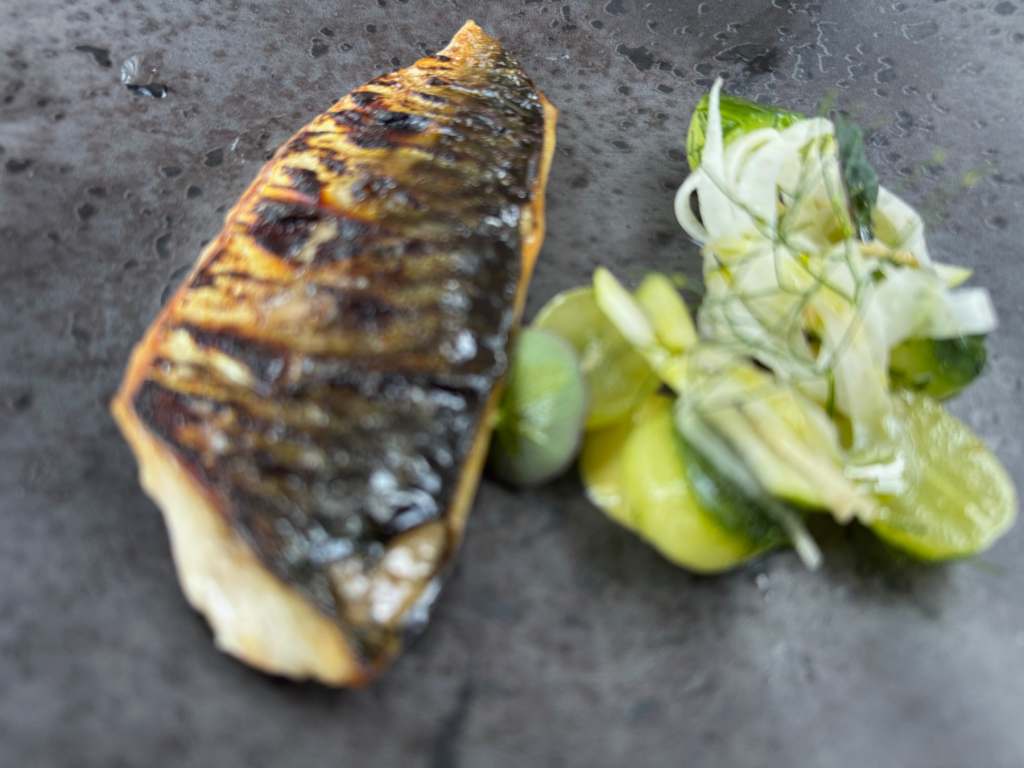
The food matched the setting. I started with an excellent grilled mackerel. This I followed with a pollack which I find to be an underrated fish, and a plate of local cheeses.
However, just like with Peak Edge it was the view that surpassed the food, so we finished the evening watching the sheep and debating to no conclusion how they slept.
Chatsworth House
I awoke to discover I was not suffering from any stiffness after the previous day’s exertions. Strictly speaking I had no need for a final session in the hot tub before breakfast, not that this deterred me.
The Peak District is not just renowned for its excellent walking. It also has some wonderful stately homes. Pride of place goes to Chatsworth House, which is thought to have provided the inspiration for Pemberley when Austen was staying in Bakewell. Chatsworth was also the setting for the 2005 film version of Pride and Prejudice. A statue of Matthew Macfadyen playing Darcy can be found in the Orangery shop.
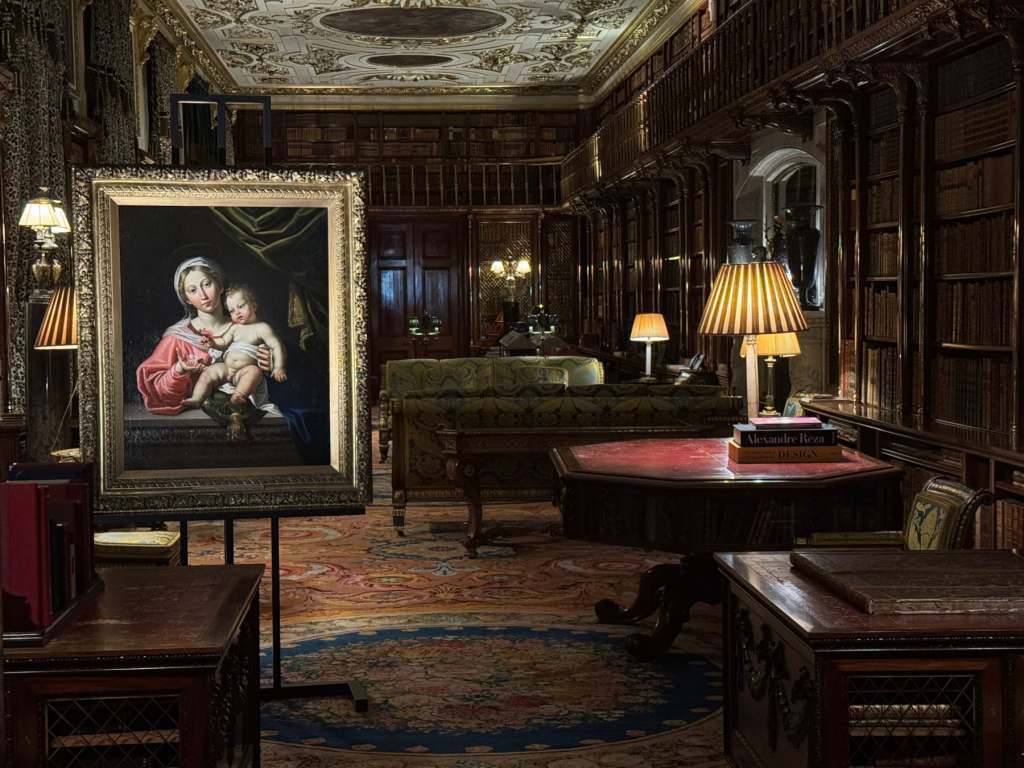
After breakfast we headed for Chatsworth, which is fine enough to turn many a head including Elizabeth Bennet. The novelist Elizabeth Gaskell said she “felt like Cinderella” when she visited in 1857.
The view approaching Chatsworth House is as sweeping as it is spectacular. The whole estate spreads across 35,000 acres. It stands on the east bank of the River Derwent, between the Derwent and Wye valleys. In addition to the home and gardens there is extensive parkland, wooded hills and even heather moorland. This is an ideal place for a summer’s stroll, especially for a single man in possession of a good fortune.
Chatsworth House was built between 1687 and 1708, in the English Baroque style, although the North Wing was added in the 19th century. It’s a similar tale with the grounds. Although much of it dates back to the original house, including the Cascade and Flora’s Temple, it was transformed by Capability Brown in the mid-18th century. The impressive Rockeries were added in the 19th century.
We start our visit in the house itself, which has an amazing collection of artwork and statues, as well as beautiful ceilings. As my companion has difficulty walking great distances we hired a wheelchair, which made things much simpler, and meant she could enjoy the house for herself rather than relying on my photos.
Our favourite rooms were the amazing library (1694–1700) and ante library, which contain some 17,000 books apparently. The ground floor has been laid out as a museum which inevitably leads on to the gift shop.
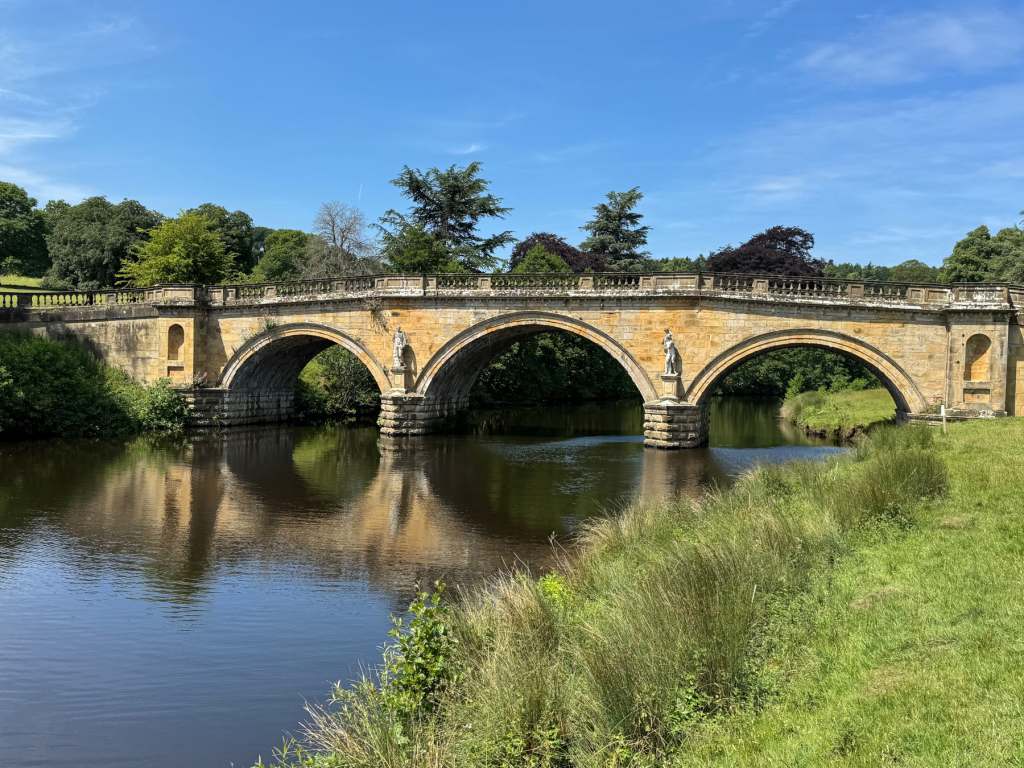
Having left my companion in the shade beside the food outlets, to explore the impressive gardens, I discovered part of the gardens were accessible. So, I returned to wheel her to The Emperor Fountain which was built in the mid-19th century for the proposed visit of Tsar Nicholas I of Russia. Designed by head gardener Joseph Paxton at the time it was the tallest fountain in the world. Unfortunately, the royal visit never occurred.
Looking at the fountain with Chatsworth House to one side and the hills beyond I reflect that this is the perfect place to conclude my tale of walking in the Peak District. The only thing missing? Some Highland cows.
Walks in the Peak District Accommodation
Peak Edge Hotel
https://www.peakedgehotel.co.uk/
Losehill House
https://www.losehillhouse.co.uk/.
Information on Walks in the Peak District Derbyshire
If you would like more information on the many walks in the Peak District, we suggest you visit Peak District Walks website.